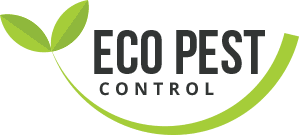How Do Pest Control Tips Differ for Indoor vs. Outdoor Infestations?
Pest infestations can occur both indoors and outdoors, often leading to significant problems for homeowners, businesses, and public spaces alike. The approach to follow pest control tips differs based on the location and environment of the infestation. While the general goal remains the same — to eliminate pests and prevent future occurrences — the methods and strategies for indoor versus outdoor infestations are distinct. In this blog, we will explore effective pest control tips for both indoor and outdoor environments and explain how the strategies vary.
Key Differences Between Indoor and Outdoor Pest Control Tips
The habitat and level of the infestation define indoor and outdoor pest control. Usually concentrating on limited, small areas, indoor pest control calls for great attention to safety and minimises disturbance of daily life. Contrary, outdoor pest management addresses more extensive regions and is impacted by environmental elements including temperature and vegetation.
Tools and approaches applied for indoor and outdoor pest control also differ. Outside control measures include more extensive treatments like pesticide applications to lawns. It even includes the use of barriers and screens. Indoor pest control usually consists in traps, sprays, and baits meant for limited space. No matter if its indoor or outdoor, in both situations going for the professional service help is the best solution out of all.
At last, indoor and outdoor insect control raises different safety and health issues. Indoor treatments have to take sensitive people, children, and pets into account. And due to the safety concerns, low-toxic or non-toxic solutions are more advisable. Although outdoor treatments can involve powerful chemicals, these can usually be sprayed in more open areas, therefore reducing direct exposure hazards.
Discussing the Most Common Indoor vs. Outdoor Pests
Common Indoor Pests
· Ants
Among the most often occurring indoor pests are ants. Food crumbs, sweet materials, and dampness particularly draw them. Once they discover a food supply, they leave a smell trail for others to follow, thus fostering an infestation.
· Cockroaches
Common pests in kitchens and bathrooms, cockroaches are nocturnal and flourish in dark, wet environments. They are dangerous for health since they contain allergies and microorganisms.
· Carpet Beetle
They are well known for ruining house carpets. Found on carpets, wool fibre is what they eat and over time can discreetly inflict major damage.
· Bed Bugs
Little insects called bed bugs eat human blood. Often hiding under beds, furniture, and wall cracks, they are hard to find. Bed bug bites can be uncomfortable and irritable.
Common Outdoor Pests
· Fleas
Although they can potentially afflict people, fleas mostly plague animals. Known for inflicting irritation and discomfort, these microscopic leaping parasites eat blood.
· Spiders
Although some spiders have uses, others are seen as pests. Being dangerous with venomous bites, they weave webs in corners, gardens, and outside buildings.
· Wasps
Aggressive and able to create nests around houses are wasps. Their stings hurt and some people have allergic reactions from them.
Outdoor Pest Control: Prevention Begins Outside
1. Keep Up Your Garden and Lawn
Pests will never be attracted to the lawn areas that are fully clean. These areas could provide hiding places for rodents and insects. You should be routinely mow your grass, cut bushes, and weed overgrown plants. Regular cleaning of mulch and leaves will help to avoid drawing in pests such ants, termites, and cockroaches.
2. Avoid Standing Water
Cockroaches find home in standing water. Empty any containers, birdbaths, or clogged gutters collecting water to help to lower their population. Preventing water build up on your property depends mostly on appropriate drainage surrounding it.
3. Using Pest Repellents
To drive away outdoor bugs, both natural and synthetic insecticides works great. Around your yard, apply diatomaceous earth, neem oil, or citronella candles to discourage ants, and fleas. Trap or bait stations can help lower the numbers of bigger pests, like rodents.
4. Support Natural Predators
Many of the predators that nature offers assist in pest control. Pest numbers can be controlled in part by birds, frogs, and helpful insects including ladybirds. Add birdhouses, ponds, or native plants to make an appealing setting for these natural pest control agents.
Indoor Pest Control: Ensuring a Pest-Free Home
1. Keeping the House Neat and Tidy
Food and shelter draw pests. Clean your house often; pay particular attention to kitchens and dining rooms. Arrange food in sealed containers; clear garbage, spills, and crumbs. Pet food shouldn't be left out overnight since it draws ants and rats.
2. Seal Gaps and Cracks
Preventing interior pests depends on closing cracks and gaps in windows, doors, and walls, much as outside pest management depends on this as well. Particularly pay close attention to areas around air vents, electrical outlets, and pipelines since these are often rodent and insect access routes.
3. Apply Bait and Traps
Traps and baits work well for pests including cockroaches and rodents. Set traps next to food sources or along walls to capture pests in places you have observed activity. Additionally, useful for drawing in and killing ants and termites are baited traps.
4. Consult Natural Remedies
If you would want natural remedies, there are various non-toxic approaches to discourage indoor pests. Peppermint, eucalyptus, and lavender among other essential oils help discourage mice, ants, and spiders. Furthermore, safe indoor use of diatomaceous earth can help to control fleas and bed bugs.
ECO Pest Control: Your Trusted Partner in Eliminating Creepy Crawlies
At ECO Pest Control, we believe in creating healthier environments by providing eco-friendly control solutions. Our expert team uses sustainable methods to eliminate pests while safeguarding your home, family, and pets. Whether you're dealing with ants, rodents, or bugs, we offer customized treatment plans designed to prevent future infestations. We prioritize safety and effectiveness, using natural products that are both efficient and environmentally responsible.

